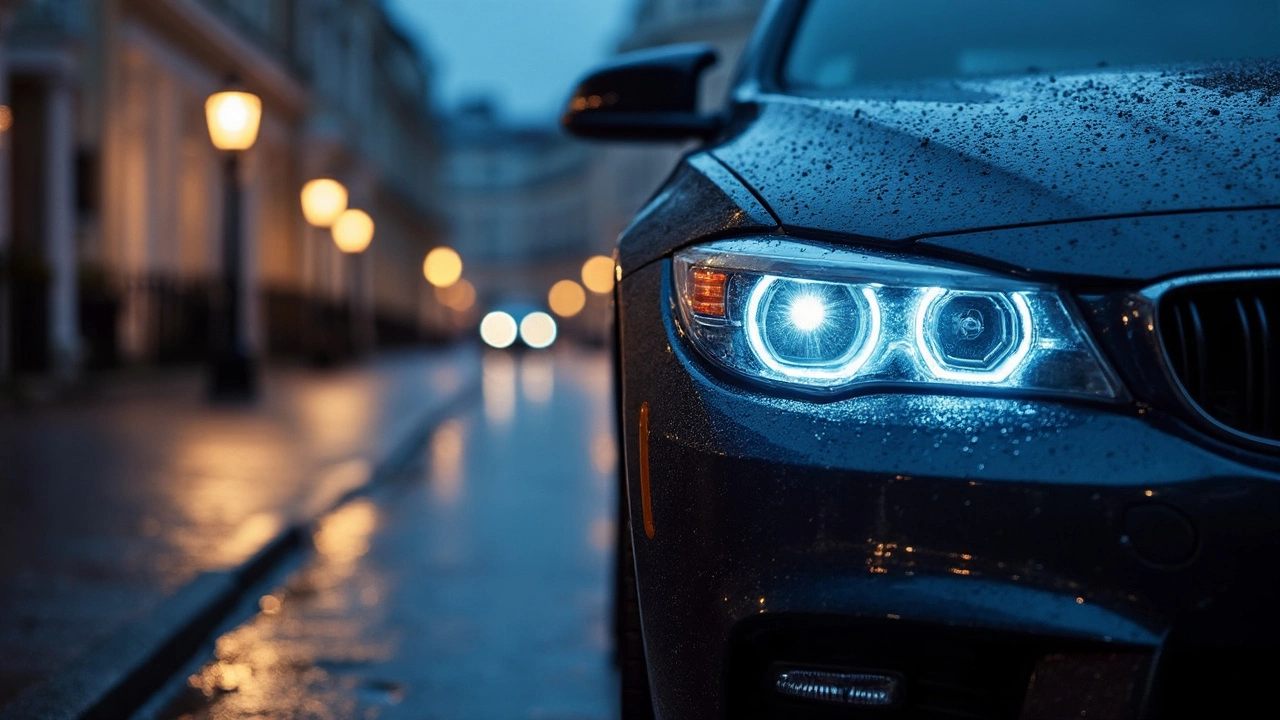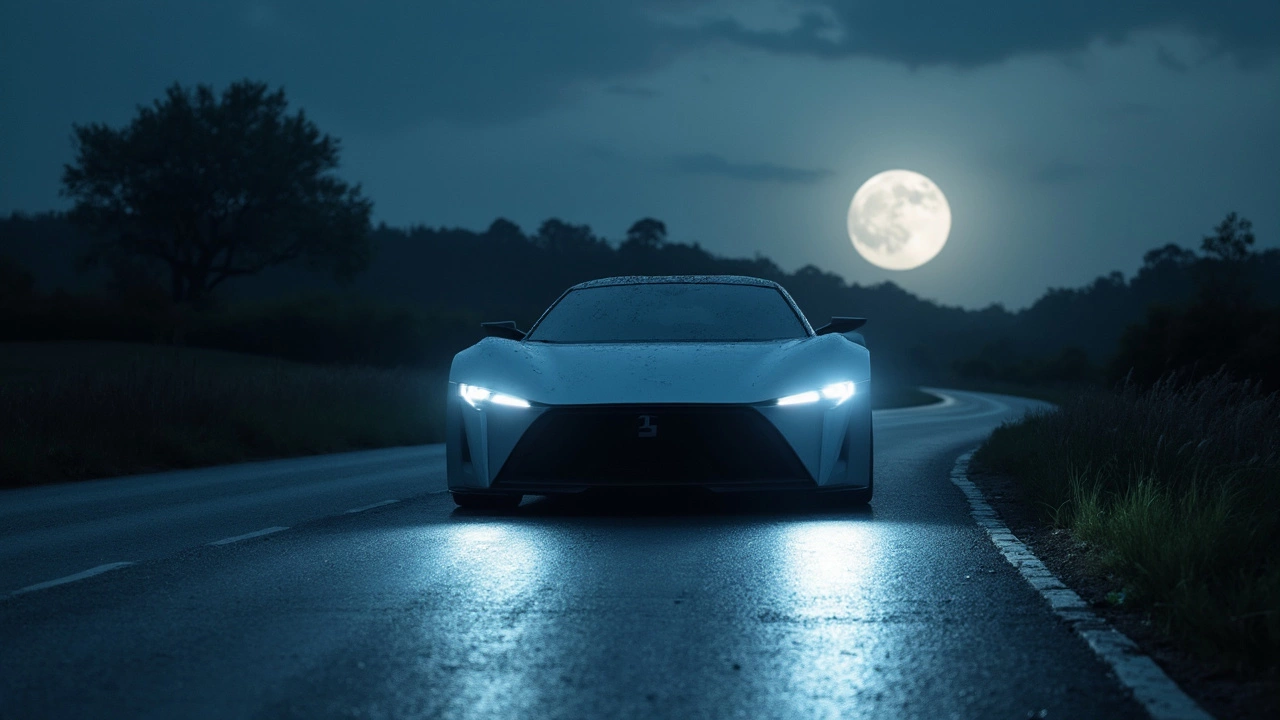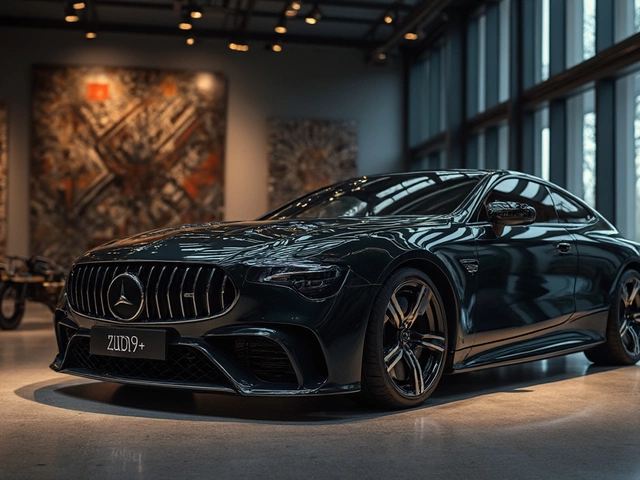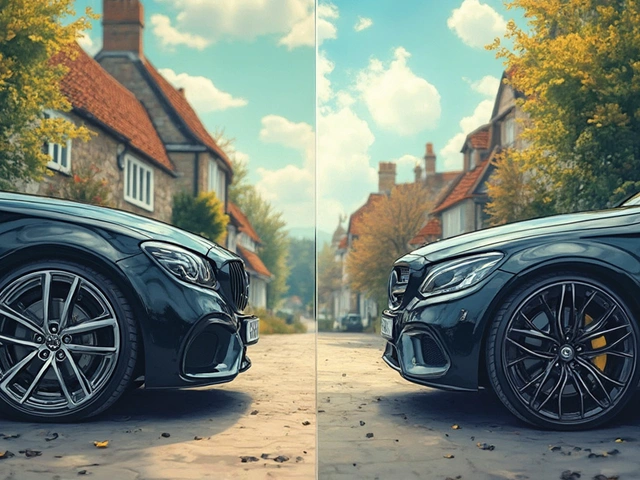Thinking about upgrading your headlights to 6000K LEDs? It's a popular choice, but not without its debates. First things first—what does 6000K even mean? Well, it's all about color temperature. In lighting terms, 6000K is cool white, almost like daylight.
Cool, right? But here’s the thing—it can be pretty darn bright. Some folks love it because it looks sharp and modern. But others worry it could be a bit much, especially when oncoming traffic is involved. You wouldn’t want to blind fellow drivers!
So, is it too bright? Depends. 6000K might seem intense compared to your old halogens, but effectiveness really hinges on the beam pattern and how they're aimed. Proper installation is key.
Stick around as we go through more pros and cons, how it stacks up against other options, and what the rules say about LED brightness. By the end, you'll have a clearer idea if 6000K LEDs are your headlights' next big thing.
- Understanding 6000K and Its Effects
- Comparing with Other Headlight Colors
- Safety and Legal Considerations
- Practical Tips for Choosing LEDs
Understanding 6000K and Its Effects
When you hear '6000K', it might sound more like a distant galaxy than a headlight spec. But this figure is all about LED headlights. In simple terms, it refers to color temperature, which impacts how the light looks to the human eye. Specifically, 6000K emits a cool white light that mirrors natural daylight.
Why does this matter? Well, the closer your headlights' color temperature is to daylight, the more natural your night-time driving experience becomes. Some drivers say they notice improved visibility at night with this bright, crisp illumination.
Color Temperature Explained
The Kelvin scale, used here, measures the hue of the light. Lower numbers, think 3000K, give a warm yellow light, while higher numbers, like 6000K, inch into the daylight zone. This can be beneficial since the white-blue light can make road signs and markings stand out more.
Is 6000K Too Much?
The big debate often revolves around whether 6000K is too bright. While it seems dazzling—6000K isn’t necessarily about raw brightness or intensity; it’s about hue. Brightness also depends on the lumen rating, with more lumens meaning more light output. But, 6000K can feel very bright, particularly to the average eye adjusting from darkness to light.
Potential Effects on Drivers
Some drivers have reported that high color temperatures can potentially lead to more glare, especially for oncoming traffic. This is important because while you want better vision on the road, the last thing you need is to compromise the safety of others.
| Color Temperature (K) | Color Description |
|---|---|
| 3000K | Warm White |
| 4000K | Neutral White |
| 6000K | Cool Daylight |
Consider 6000K LED headlights if you desire that modern, sleek look, but be mindful of their effects. Adjusting angle and placement to avoid excessive glare could balance things out. Understanding these nuances makes it easier to decide if this lighting option fits your driving style.
Comparing with Other Headlight Colors
Thinking of going for 6000K LED headlights but unsure how they stack up against other colors? You're not alone. Let's break it down. The numbers you see—like 4300K, 5000K, and 6000K—refer to the color temperature measured in Kelvin (K). It might sound technical, but here's the scoop.
LED headlights with a 3000K rating give off a warm yellow glow, similar to standard halogens. They might not look as modern, but they perform well in fog or heavy rain because yellow light tends to cut through haze better.
Next is the 4300K to 5000K range. These LED options emit a neutral white light, closest to natural daylight. They’re popular for striking a balance between visibility and comfort, reducing eye strain during long drives.
Then we have our star, 6000K headlights. As we've mentioned, these are cool white. It's sharp, and as some drivers swear by it for aesthetics, it can enhance what's called 'perceived brightness'—things just look clearer.
But what about other extreme ends like 8000K? They're bluish and might look futuristic, but they’re questionable for road use—less effective in actual visibility.
Making the Right Choice
- If you drive through fog or rain often, sticking to lower Kelvin values like 3000K could be more practical.
- For a modern look without sacrificing performance, 4300K or 5000K is usually recommended.
- 6000K headlights are great if aesthetics and maximum brightness appeal to you.
- Consider legality and common conditions on the roads you drive, as not all headlight colors are road-legal everywhere.
Ultimately, choosing between headlight colors boils down to your priorities. Need the best look or optimum performance in harsh weather? Keeping these factors in mind will steer you in the right direction.

Safety and Legal Considerations
So, you're considering 6000K LED headlights, but is it all legal and safe? It's a good question to ask. Car lighting isn't just about what looks cool; it's also about sticking to the rules and keeping everyone safe.
Legal Guidelines
When it comes to headlights, different countries and even states have their own rules. In Australia, for example, headlights must meet certain standards set by the federal government. So, installing 6000K headlights might require checking their compliance with these regulations.
Europe follows strict regulations under the ECE standards. If you're planning a road trip across the continent, ensure that your lights meet these requirements to avoid fines.
Safety Precautions
Bright lights like those from 6000K LEDs can enhance visibility but also pose risks. Glare is a biggie—those super bright beams might dazzle oncoming drivers. Hence, it's critical that your headlights are correctly adjusted to prevent your car from becoming a moving spotlight.
Installation Tips
Here are a few pointers to help you install LED headlights safely:
- Always follow the manufacturer’s instructions carefully.
- Consider professional installation if you're not confident doing it yourself.
- Regularly check the alignment of your beams.
- Test your headlights in various conditions to ensure they are clear but not blinding.
Staying informed about headlight regulations and adopting the right safety measures will ensure you're not just lighting the road for yourself but also keeping it safe for everyone else.
Practical Tips for Choosing LEDs
Navigating the world of LED headlights can feel like stepping into a gadget wonderland. To make it easier, we've got you covered with some practical tips to spot the real gems in your headlight hunt.
Aim for Compatibility
Your car's make and model play a big role in selecting the right LED headlight. Always check your vehicle’s user manual or reach out to your dealership to confirm what fits. Not every LED is a universal fit, so you don't want to end up with bulbs you can't use.
Understand the Brightness
Brightness isn't just about color temperature. Look for the lumen rating—a higher number means a brighter light. For city driving, around 3,000-4,000 lumens might just do the trick, while rural or off-road environments may benefit from higher intensity.
Check for Additional Features
Today's LEDs aren't just about light. Some come with built-in fans for cooling, which can extend the life of the bulb. Others are equipped with anti-flicker features. Keep an eye out for these handy extras that could save you future headaches.
Focus on Beam Pattern
The beam pattern determines how well your headlights light up the road. A poor pattern can cause glare, blinding drivers and reducing safety. Brands that pay extra attention to beam design usually offer superior performance. Test them if you can!
Consider Color Choices
While 6000K headlights are popular, they're not the only choice. If you prefer a softer look, you might go for 5000K LEDs, which give off a slightly warmer tone. Always choose what's best for your visibility and comfort.
Legal Check
Laws differ from one place to another. So, before buying, ensure your LEDs align with local regulations. No one wants a ticket for fancy new lights!
Budget vs. Quality
Cheap isn't always cheerful with LEDs. Wherever possible, prioritize quality. You don’t want to change them frequently, and quality LEDs provide better longevity.
Brand Reputation
Opt for brands with a solid rep. Reviews can be your best friend here. See what other drivers love or hate about their choices before committing.
LED headlights can be the perfect upgrade with the right info. Stick to these tips, and you'll light up the road like a pro.






